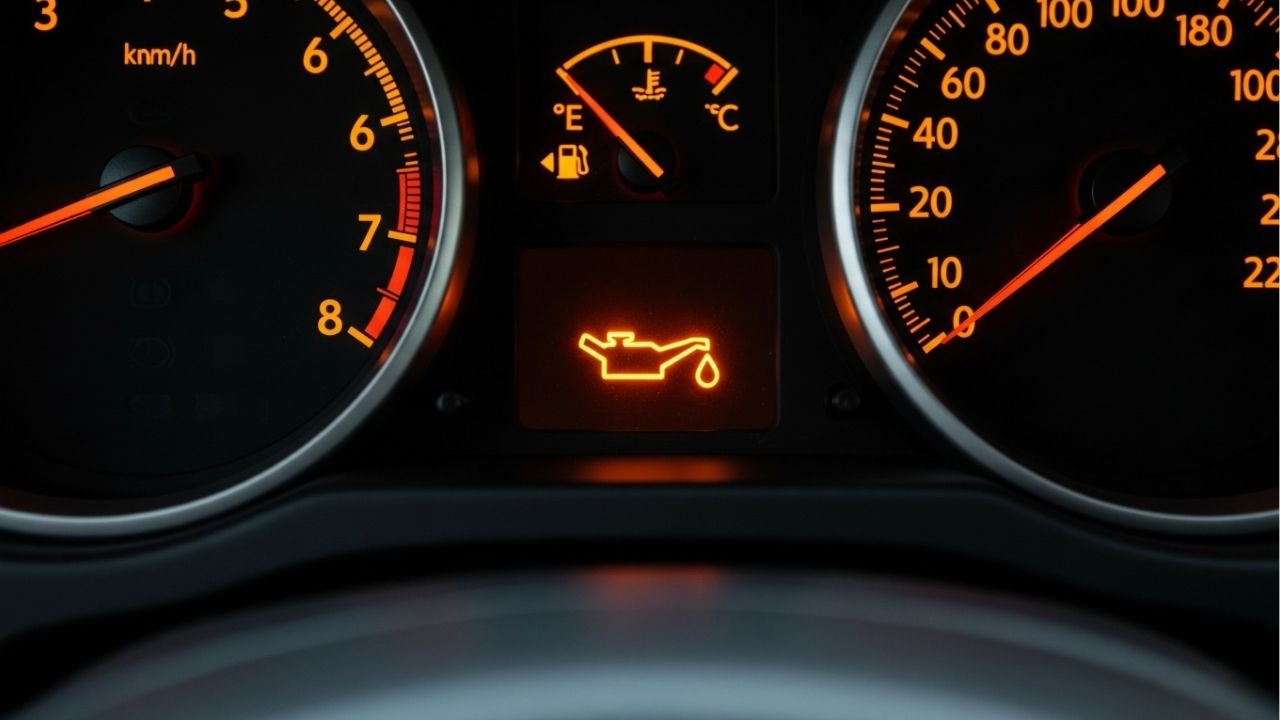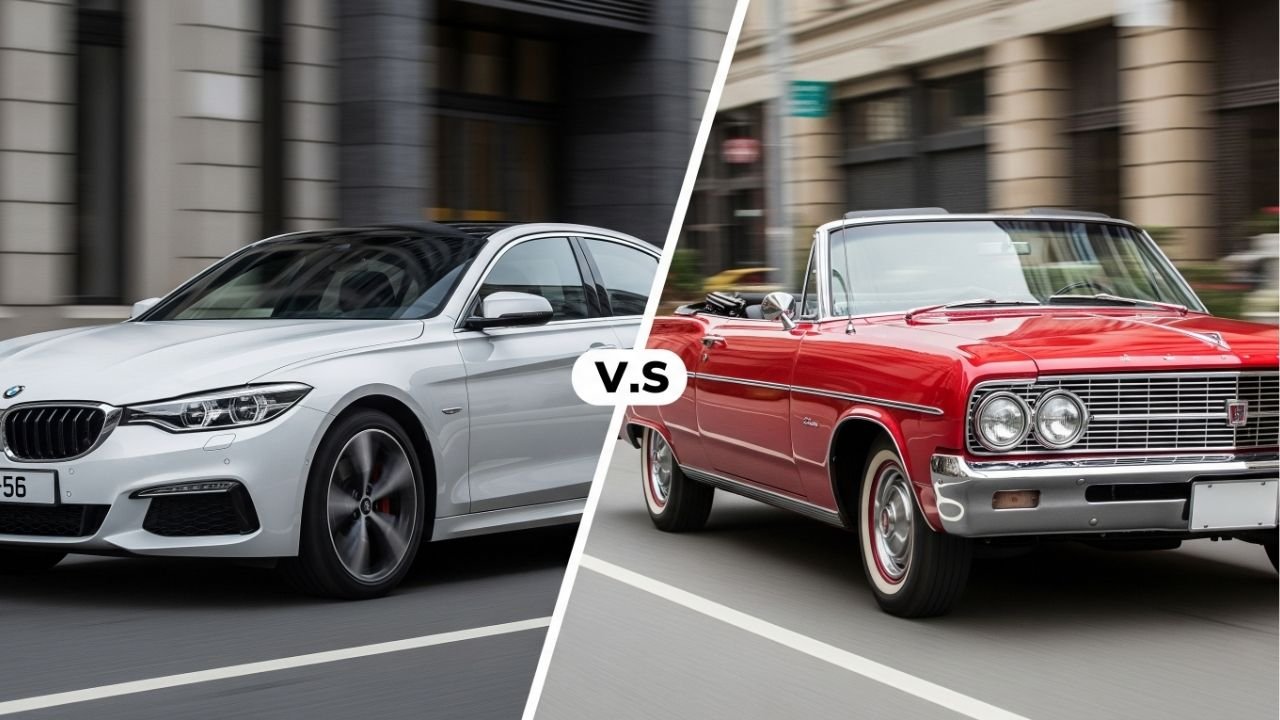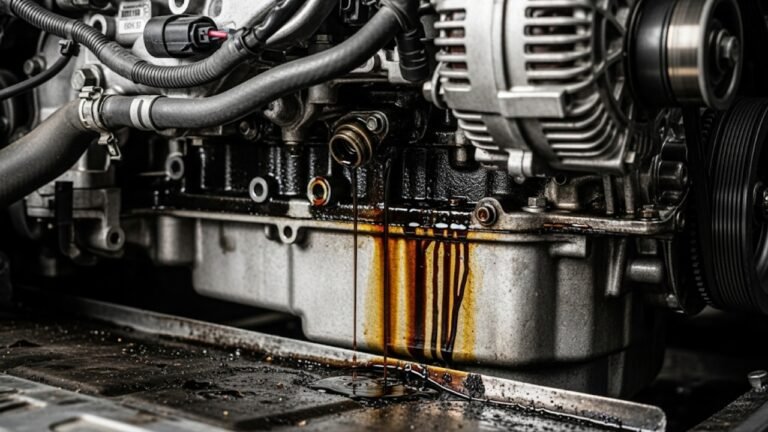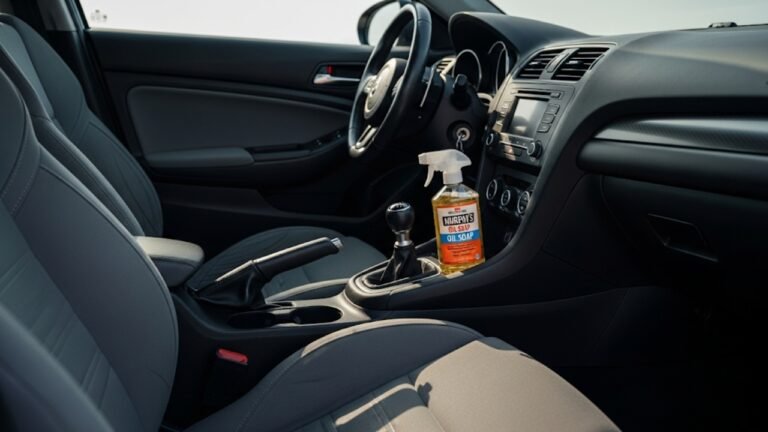Will My Car Tell Me When Oil Is Low?

Let me ask you something—have you ever heard your car cry for help? No, I don’t mean it literally sobbing in the garage. But cars do have ways of speaking, especially when something important—like engine oil—runs low. The real question is: will my car tell me when oil is low, or am I supposed to guess?
Imagine this: you’re driving down the highway, singing your favorite song, coffee in hand, when a little orange light flashes on your dashboard. Panic? Curiosity? Most of us shrug it off until it’s too late. And that’s where many go wrong. I’ve been there myself—and trust me, ignoring oil warnings can be like ignoring a smoke alarm during a fire. You don’t want to wait until the engine starts rattling like a coin in a tin can.
In this guide, we’ll walk through how cars communicate about low oil levels, what signs to look for, why it matters, and what could happen if you don’t pay attention. We’ll also share real-life insights, stories, and a few hard-earned lessons that can save you thousands in repairs.
Why Engine Oil Matters More Than You Think
Engine oil is the unsung hero of your vehicle. Think of it like blood in the body. It flows through the engine, keeping it cool, clean, and well-lubricated. Without enough oil, metal parts grind together, heat builds up, and before you know it—bang!—your engine could seize up.
Here’s what engine oil does:
-
Lubricates moving parts to reduce friction
-
Cools the engine by carrying heat away
-
Cleans the engine by trapping dirt and debris
-
Prevents corrosion on internal components
But when the oil level gets too low, none of these functions work properly.
Fun fact: Most engines need about 4 to 5 quarts of oil. Losing even one quart can cause serious damage over time.
So, it’s only natural to ask: Will my car tell me when oil is low, or do I need to check it myself?
Modern Cars vs Older Cars: Who’s Talking?

Here’s a quick comparison:
| Feature | Modern Cars (2010 and newer) | Older Cars (Before 2010) |
|---|---|---|
| Oil Level Sensors | Common | Rare |
| Dashboard Warning Lights | Usually accurate | May only show oil pressure |
| Oil Life Monitoring Systems | Standard in newer models | Not available |
| Digital Alerts/Smartphone Integration | Available in many models | Not supported |
In modern vehicles, the low oil level warning usually pops up on your dashboard. It might say “Check Oil Level”, “Low Oil,” or display an oil can symbol dripping a drop. Some cars even send alerts to your phone through apps!
But in older cars, things aren’t that simple. They often only monitor oil pressure, not oil level. That means if you’re losing oil gradually, the car might not alert you until the pressure drops—which is already dangerous.
Warning Lights: What They Really Mean
Okay, let’s get real for a second. Those dashboard lights? They’re like your car’s text messages. Some are friendly reminders, others are red-alert emergencies.
Here are the key lights to know:
-
Oil Level Light: Looks like a little oil can. If this turns on, your oil is low—refill it ASAP.
-
Oil Pressure Light: Also shaped like an oil can, but red. If this lights up, your engine isn’t getting enough pressure. Stop driving immediately.
-
Maintenance Light: A generic light that may mean your oil needs a change.
-
Digital Alert (on some models): May pop up with text like “Engine Oil Low—Add Oil”.
Warning: Ignoring these lights can lead to engine overheating, metal wear, and full-on breakdowns. I’ve seen engines destroyed just because someone didn’t want to pull over.
How Your Car Knows the Oil is Low
So, how does your car know? It’s not magic—it’s sensors.
There are usually two types of oil-related sensors:
-
Oil Level Sensor: Measures the amount of oil in the pan. If it’s too low, it sends a signal to the dashboard.
-
Oil Pressure Sensor: Monitors how well oil is flowing. If the pressure is weak, it triggers the red oil warning light.
Newer vehicles often have oil life monitoring systems, too. These track:
-
Miles driven since the last oil change
-
Engine revolutions (RPMs)
-
Driving conditions (cold starts, short trips, high-speed driving)
It’s like a smart assistant, telling you when the oil is low—or worn out—even before it becomes a serious problem.
What If Your Car Doesn’t Tell You?
Here’s the scary part: Not all cars will warn you.
Some cars—especially older models or basic trims—might not have a dedicated oil level sensor. Instead, they rely on the oil pressure sensor. That’s a problem because by the time pressure drops, damage may already be happening.
True story: A friend of mine had a 2004 sedan. No warning lights. No symptoms. One day, it just died on the road. The mechanic said the oil was nearly empty, and the engine had seized. Cost? $3,500 for a new engine.
If your car doesn’t alert you, it’s up to you to check. Here’s how:
How to Manually Check Oil Level
-
Park on level ground.
-
Wait 10 minutes after turning off the engine.
-
Pull out the dipstick, wipe it clean, reinsert it, then pull it out again.
-
Look for oil between the Min and Max lines.
-
If it’s low, top it up with the correct grade.
Checking oil takes 2 minutes—less time than brushing your teeth. And it can literally save your engine.
Signs of Low Oil (Even If the Car Doesn’t Tell You)
Sometimes, your car gives you subtle hints—like a friend trying to say something without actually saying it.
Here are common symptoms of low oil:
-
Tapping or ticking sounds from the engine
-
Burning smell inside the car
-
Overheating
-
Sluggish acceleration
-
Poor fuel economy
-
Excessive exhaust smoke
These are your red flags. If you notice any of them, check your oil right away.
Pro tip: Keep a spare quart of oil in your trunk—just in case.
Real Talk: How I Almost Blew My Engine
I once took a solo road trip from Dhaka to Cox’s Bazar. Midway through the drive, I noticed the engine sounded… off. Kind of like it was working extra hard. But there was no warning light. So, I kept going.
Big mistake.
An hour later, I pulled over for tea and decided to check the dipstick. Bone dry. Not even a drop. I had been driving on fumes. One more hour, and I could’ve toasted my engine. Thankfully, the roadside mechanic had oil—and I dodged a disaster.
That moment taught me something important: Don’t wait for the car to tell you. Learn to listen and look.
What Happens If You Ignore Low Oil?
Let’s not sugarcoat it: ignoring low oil is like ignoring chest pain—it can be fatal for your engine.
Here’s what can happen, step-by-step:
-
Increased Friction: With low oil, parts like pistons and valves start grinding. It’s like trying to run a marathon barefoot.
-
Overheating: Oil keeps your engine cool. Without it, temperatures rise fast.
-
Engine Wear: Metal parts wear down rapidly, shortening your engine’s life.
-
Oil Pump Damage: Running dry can burn out the oil pump—an expensive fix.
-
Engine Seizure: The worst-case scenario. The engine locks up completely and needs a rebuild or replacement.
Cost check: Replacing an engine can cost between $3,000 to $10,000, depending on your car model.
If you’ve ever heard that horrifying clunk followed by dead silence under the hood—you know the feeling. It’s a mix of dread, regret, and “Why didn’t I just check the oil?”
How to Add Oil Like a Pro (Even If You’re Not One)
Topping off your engine oil isn’t rocket science. It’s something every driver should know—like making instant noodles or checking your phone battery.
Step-by-Step Guide:
-
Turn Off the Engine: Wait 10-15 minutes after stopping to let oil settle.
-
Open the Hood: Look for the oil filler cap (usually labeled “Engine Oil”).
-
Check the Dipstick: Pull it out, wipe it clean, reinsert, and check the level.
-
Add Oil Slowly: Use a funnel to avoid spills. Pour a small amount (half a quart).
-
Check Again: Wait a few minutes, then recheck the dipstick.
-
Close Everything Up: Once it’s between Min and Max, you’re good to go.
Pro tip: Always use the recommended oil grade for your vehicle. You can find it in your owner’s manual or under the hood label.
How Often Should You Check Your Oil?
There’s no one-size-fits-all answer, but here’s a general rule of thumb:
| Driving Condition | Check Oil Every |
|---|---|
| City Driving (stop-and-go) | 1,000–1,500 km |
| Highway Driving | 2,000–3,000 km |
| Older Cars | Every 1,000 km |
| Newer Cars with Monitors | Follow dashboard alerts |
Make it a habit—like brushing your teeth or checking your phone notifications.
If your car doesn’t have an oil level sensor, you should be checking manually at least once a month.
Smart Habits to Avoid Oil Surprises
Here’s how to stay ahead of low oil problems:
-
Change your oil on schedule (every 5,000–10,000 km, depending on your car)
-
Use quality oil and filters
-
Don’t skip maintenance appointments
-
Set reminders on your phone
-
Watch for leaks—especially under the car in the morning
Tip: Keep a quart of engine oil, a funnel, and some gloves in your trunk. Emergency kits aren’t just for tires!
Frequently Asked Questions (FAQs)
1. Will my car tell me when oil is low, or do I need to check it myself?
It depends on your car. Modern cars with sensors will usually show a low oil warning light. But older models may only display an oil pressure warning—which can be too late. Always double-check manually if you’re unsure.
2. Can I still drive if the oil light comes on?
No, it’s not safe. The oil light means your engine may not be getting enough lubrication. Pull over immediately, check the oil level, and add oil if necessary.
3. What does it mean if the oil light flickers?
Flickering could indicate low oil pressure, dirty oil, or a failing oil pump. Don’t ignore it. Get your car checked soon.
4. What type of oil should I use for my car?
Check your owner’s manual or under-hood sticker. Using the wrong oil can harm engine performance, especially in extreme climates.
5. How do I know if my oil is bad, not just low?
Old or dirty oil looks dark and gritty. Fresh oil is amber and smooth. If the oil smells burnt or feels thick like syrup, it’s time for a change.
6. Is low oil the same as needing an oil change?
Not always. You can have clean oil that’s low, or dirty oil that’s full. Both situations need attention, but for different reasons.
7. How long can I drive with low oil before damage occurs?
In many cases, just a few kilometers can cause damage. If your oil pressure is low, damage starts within minutes. Don’t gamble.
8. Can low oil cause the check engine light to turn on?
Yes. Some vehicles will trigger the check engine light if oil levels affect engine performance. But it’s not always a direct link.
Final Thoughts: Don’t Wait Until It’s Too Late
Your car may be a machine, but in many ways, it behaves like a person. It has needs. It gets tired. And when it’s low on oil, it hurts. The difference is—it can’t talk. It relies on signals, lights, sounds, and your intuition.
So, the next time you ask, “Will my car tell me when oil is low?”—remember, maybe it will. But maybe it won’t.
Don’t wait for a breakdown to start paying attention.
Think of checking your oil like checking your heartbeat. It’s quick. It’s simple. And it keeps everything running smoothly.






